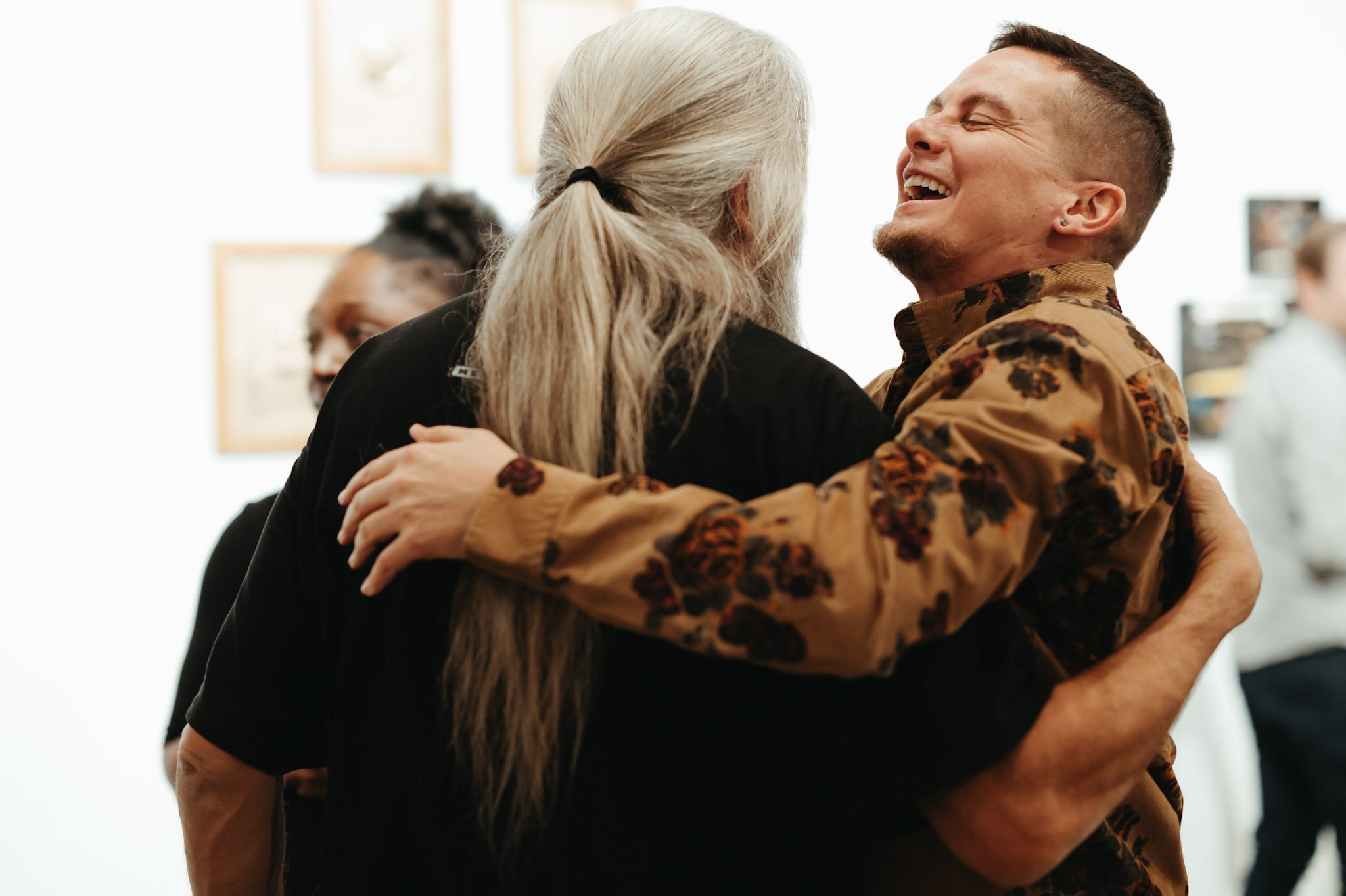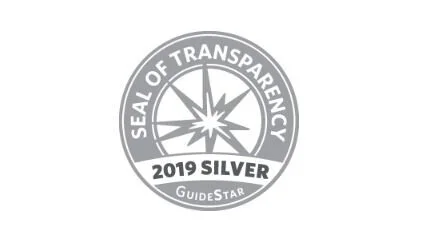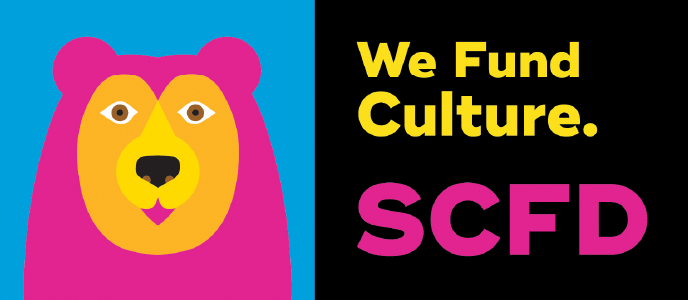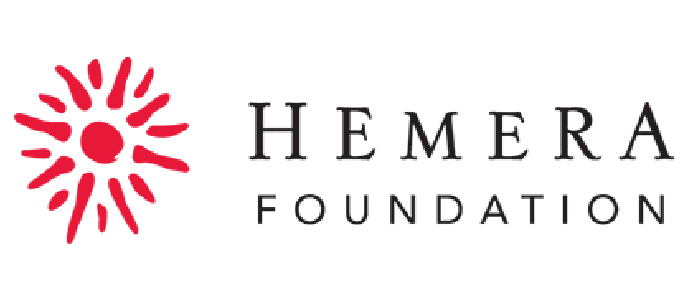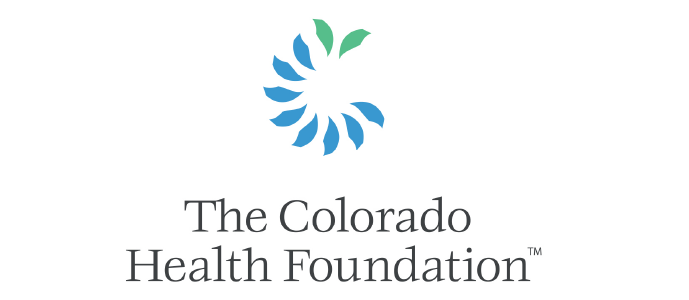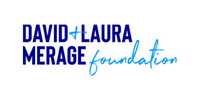Gonzo is a legend around RedLine. In 2008, the RedLine community crossed paths with Gonzo through the REACH program, which offers a supportive space and supplies for artists that are unhoused, experiencing financial hardship, and/or are in recovery.
Gonzo not only accepted the invitation, but soon became the biggest recruiter to the program after recognizing the positive change that art had in his own evolution. From the program’s first participant to its greatest ambassador, Gonzo is the heart and foundation of the REACH program.
In celebration of Gonzo's current retrospective at RedLine, curators Robin Gallite and Louise Martorano sat down with Gonzo to chat about his evolution as an artist and time in RedLine's REACH program.
Watch the full interview and learn more about Gonzo's retrospective Parallel Evolution—Gonzo: An artist trajectory in three phases.
Robin Gallite:
How did all of us get to this place? Sometimes I can't even wrap my brain around that, but what do you think? How did we get here?
Gonzo:
I walked in here. I did. If I was going to find a musical statement, it would be, what a long, strange trip it's been.
This has just been the best time of my life. I've never been accepted like this before, just let loose and let me be me. When we first started coming here, it was once a week.
To me, Tuesday becomes Sunday, my sacred day. That's how I got here. I came in here because I needed to.
Robin Gallite:
What year was that? 2006?
Gonzo:
It was after.
Robin Gallite:
No, 2006 is when you started-
Gonzo:
2012-
Louise Martorano:
2012, yeah.
Gonzo:
Whitney Houston died, and I shaved my head. I remember sticking my face where the office is over here because I had a shaved head and beard. So, it was right about 2011.
Louise Martorano:
I remember we had our first REACH exhibition in the foyer in 2012.
Robin Gallite:
I remember PJ, our past executive director saying, "You're going to run this program." And I was like, "Well, what is the program?" And he was just like, "Well, people are going to come over from the service providers and make work in the community studio." And I was like, "Well, there's not even a community studio yet."
And he's like, "Meet this guy Gonzo." And he's like, "You're going to run this program." And I was like, "Okay," and we really didn't know what it was, other than we wanted to make sure it was...wanted to make sure it was a space where people could come and create and have supplies and to feel safe, included, and really, you're the beginning of it.
Gonzo:
God, that's so long ago, I can barely remember, but I remember looking forward to coming here every day. And when they first sent the people over to the building I was living over here, at the Cornerstone. I didn't want to join that group. "Come on, Gonzo, you're an artist." I go, "I ain't that kind of artist," because there's basically people who were trying to do crafting kind of stuff, and I was still digging in the graphic art stumps across the way there, finding big blueprints, vinyl pieces, all kinds of stuff, and working on it in my apartment over there, and that's basically where I first started when I hit the streets.
Louise Martorano:
Did you ever actually want a space to do work beyond...did you ever envision yourself in a studio, doing a retrospective, leading a program?
Gonzo:
No. When I walked in that door, I had no idea what I was walking into. All I wanted to do was be an artist, quit trying to be somebody. That's why I came in here.
Robin Gallite:
So we're curating, Louise and I, which we're very honored and happy to curate your solo exhibition in this space, your first solo, and kind of a 20-year span of work starting kind of in 2006, but I find it hard to separate you and the work.
And then in your early phase of experimentation of your media, your creation of your own language in your work, you also shared that you were really leading this double life, an identity one inside RedLine, which was kind of one life of yours and one way of being, and then one on the street. Can you share about that time?
Gonzo:
I was coming to grips with a time in my life where I already knew that I needed to change. I was getting tired of being pointed at the next day and said, "Do you know what you did?" I was just really tired of who I was, and I came in here to quit trying to be somebody.
All my exercises...I discovered therapy and passion when I was in prison. That's where art first started. I never thought I'd be a therapeutic person, but I've learned to endorse that, and that's how it started. And then you came up with that outsider artist. I was trying to find identity.
Why am I so compulsively into drawing and creating art? I hadn't even really created artwork yet. I was drawing and doodling with pencils and pens, but it was just the opportunity to be able to paint and be recognized.
Louise Martorano:
When you came here, Gonzo, I feel like not only...it just seemed like from the jump, art was beyond you and your ideas, and it was very much also who you were around, who was with you, how they were part of what you were doing, which I think really speaks to a lot of your collage style.
It's like there is always kind of so many elements to your work and that includes the people you're in relationship with and you're considering in your practice, and I just don't know how much you realize how much space you have made for others to do exactly what you did and how thoughtful you have been in making the same kind of sacred space.
When you first walked into RedLine, you made something for yourself, but you actually made something much more for others and opened up your practice in a way that opened up it as a possibility for so many—whether it's people collaborating with you on the collages or always welcoming people into the joy that you have found in this.
It's been amazing to see how much something that has been, what you say, a retreat and sacred for you has actually been, I think, that exact thing because of what you do for so many.
Gonzo:
It was when I basically starting to discover what community was, as well as reaching out and helping other communities and learning to bring people in. After a while, I considered myself a fancy hood ornament, dressing up the place, and something to get people's attention, but it was much more than that.
And just lately I've been thinking it's much more than the artwork I've created, it's the experiences that I've learned here and how to communicate to people without trying to victimize them or to turn them into potential clients or...it sounds like I'm trying to sell something sometimes, but I'm just trying to inspire people. Inspire is another word that I've learned here.
I learned early on, before I even came here, when I was sitting in St. Francis drawing all the time, how it would draw people to me and I'd have a whole table of people sitting there doodling with my pencils and stuff, and Michelle would come over and say, "Where's my seat?" Oh God, no seriously, but I noticed how the creative energy draws people and makes you feel welcome, and then they would just go out about their daily business after a while. One guy used to hold a sign compulsively all the time out there, but at the table he was really kind and quiet and made sense after a while.
Louise Martorano:
When you were in prison, did a community also form around you when you were drawing and doodling?
Gonzo:
People who were looking for somebody to do a tattoo, yeah. "Whoa, did you do a tattoo?" Uh-uh, but that's another thing, I realized I didn't want it to become a hustle. I didn't want to depend on it for the income. I was finding out the therapy of it, and how good I felt being in my own space and creating my own safety—plus it was keeping me out of all the other mess.
And people started relating to me with that as well, but especially during coffee time, I’d sit out there in the main room and people would just sit and talk.
I could talk and draw at the same time without even looking at the damn thing, but it's just amazing how I discovered therapy and trying to share that, and then after that, it became kind of like a meditation moment when I'm deep in my creative processes, I'm just really into a prayer mode, meditation mode, open to the voices...not voices, but the nudgings.
Do you know how we went through a time when we started using pronouns? I gave God one, so it would soften up to people when I'm talking about him all the time, the one who blesses me, and that's what this is all about.
Art became that cup of water that was offered at the well to the woman. He said, "Drink from this cup, and you'll never thirst again."
Robin Gallite:
When you came and you were making work so prolifically that you and I started talking about... You were like, "Well, what kind of artist am I?" And I think at the time, “outsider artist” was a new term, and you know how things are trendy in the art world.
And so, we started talking about that, and I actually looked up, what does it really mean? So, I want to read to you what it means. I want to know if it still connects with you. And this is the Tate Modern describes it: So they say that it has a naive quality often produced by people who have not trained as artists or worked within the conventional structures of art production.
I feel like that's a little limiting, but I also like they go on to say that it's art that is free from societal constraints, and I think that has connected with you, which is true of your work.
Gonzo:
Right, and it's just like I'm obsessed. First I was thinking, "God, I'm obsessed by this," and then it does-
Robin Gallite:
Unhealthy obsessed?
Gonzo:
No, no, no, just obsessed. My wife thinks of it as the other woman.
Robin Gallite:
That's why she tore up your work.
Gonzo:
But see, and I've been obsessed by that guy right there. I compulsively started drawing my avatar and I don't know why, but it's all messaging. And then with the spiral, the journey, that was kind of the way that all come about, too. I do a lot of my pre-planning things while I'm creating work.
Robin Gallite:
Why did outsider artist hit with you?
Gonzo:
I was looking for identity. I was looking for a way to fit in. I was looking for a way to explain my obsession. It had gone beyond hobby. It was like...it took over my TV. I don't need to be entertained, I'm thoroughly entertained. When you get into thinking about it though, it just makes sense. I was kind of like, "It's my destiny to be this, where we're at right now."
Louise Martorano:
What are you excited about in terms of the exhibition that's upcoming? Because you have experienced alongside Robin and I, over 200 exhibitions over the last 13 years, the organization of course being 15 this year. We are celebrating the 15th anniversary by celebrating you, because I don't think we’d make it 15 years without you, Gonzo.
Everything that I think this organization has strived to be, you have modeled. You have led us through these years in a way that I know, and you and I have always said, but if you leave, I leave, and vice versa.
And I think when you're in this space and you're seeing this rotation of creativity happen every year and every month, and how does 15 years feel for you in this exhibition? And what are you hoping that it will achieve for you in terms of some of your own sacred process?
Gonzo:
Well, I'm kind of glad that this step of my life is over. I can kind of put some of this away and move on. Art has always been progressive to me, one way...when I first started bringing all this stuff out of the storage, it was opening up prince's vault, and all of a sudden I'm finding old stuff that nobody's seen or did, it was unfinished, and I felt compelled to use them in my new creative processes.
So, I've been stuck doing that, but I did get an awful lot of organization done. Of course, I've always been organized.
Louise Martorano:
Was it hard at all returning to some of the... We're looking at probably 30 notebooks over here filled and-
Gonzo:
She [Robin] did that well. She says, "Gonzo, we're not going to open the books up. Look at the first page and the last pages for the dates," and that's how we did that.
Robin Gallite:
We wanted them-
Gonzo:
Because if I start opening them up, I'm gone, and bless her heart, she really helped me out because I was totally...I'd never been here before. I don't know what I was doing.
Louise Martorano:
In terms of a reflective space with your work?
Gonzo:
No, getting a solo exhibition together, being curated, blah, blah, the whole thing. I've never been here before and this is all part of my journey, this wonderful journey that I've been on. I remember all the changes. Every little paint spot back there in the space has a story to it to me.
Coming up with small ideas that turned into good ideas for the community, like making that wall an exhibit wall and having people learn how to curate small shows with their peers, that was a good program. I've had so many people come through my life back there, Abby Nash, Adam Bueller, Adam from upstairs.
I really don't need AI, the technology, because I know people that use it, that kind of thing. I've learned what community is, and that's where my heart is.
Robin Gallite:
You said you discovered community here and you said you discovered how to build community, bring people in, and you said, "My life started when I came here."
Gonzo:
My real life. My other life sucked.
Louise Martorano:
But you are saying that you're kind of ready to transition. What does that mean? So, are you thinking that you're transitioning from a different type of reality in terms of your practice?
Gonzo:
Tya [RedLine’s Art Education Director] said, "Your dreams are real. You've already created your legacy," and that right there is where I let go. I says, "I don't have to do this anymore." You guys were wonderful, you gave me a job. I gave it back to you, and we all understand the pressures I was going through at the time, and I don't even really dwell on that anymore because I'm already ready for another part of this journey.
I'm turning that into a similar resistance, which is what it ought to be, and maybe all this power, this energy that I've learned how to create, I could learn from other communities. I could maybe get a group of people and change this world.
Louise Martorano:
There is so much energy in your paintings, Gonzo. Whether it's in the movement of the composition, the movement of the brushstroke, how you're...again, the spirals, even the avatar itself feels heroic, it's active, it's an active gesture. So, I do feel like you've always been on the move.
You've always been marching, walking, running, singing towards something, and I don't think that energy will ever cease, but how it surfaces, I'm excited to see where it goes from here because I just the physics of your canvas and the momentum of the canvas is just staggering.
There is a lot going on there and all the years that came before RedLine, and all the experiences that we've had together I think are all carried in these canvases.
Gonzo:
They are, this is me growing, it's me evolving. One of the best times of my life is when you guys recognized a change in me and gave me a key to this place-
Robin Gallite:
For us, too.
Gonzo:
That really hit my heart.
Robin Gallite:
…and I think during the pandemic, you made a choice that you needed to figure out where the communities were that needed this, and you and JC went to the park and you found all these groups of individuals in recovery, struggling with unhoused situations, multiple layers of things, mental health issues, and you create further community.
And where it's now where we have five groups coming in pretty much groups every single day in REACH, the legacy is there. You've built it, we've supported, and now this is kind of your chance to show your legacy in your work and you as the individual.
That's why we decided on “Parallel Evolution.” I also feel like there's endless possibilities for you as a human and for your work. Like you said, there's no stagnant...it never stops, and kind of bookmarking, having your retrospective and having this old exhibit will do that for you.
Gonzo:
To get to that point, it never stops, I have an analogy. Being an artist is like being a shark. If you stop moving, you might as well lay down and die because they have to keep constantly moving-
Louise Martorano:
To breathe, yeah.
Gonzo:
Profound, huh?
Robin Gallite:
But it's your intrinsic need and survival to create, and I think that's where...it is, it's never going to end. Where it goes, there is this endless possibility, so I'm excited for the public and others to experience you as who you are to the community, who you are as an individual, how you've grown, how you've evolved, who's been part of that, who you've influenced and your art practice and your work.
Gonzo:
I think that was just going to happen. There were so many people out there needing this very same thing that I was looking for. First of all, I was a self-taught artist when I got here and you guys just let me keep learning.
While I'm trying to inspire others, I learned to never quit... I learned to let other people inspire me because that's where all my knowledge stuff comes from. I soak it up like a... Excuse me, like a sponge, anyway.
Louise Martorano:
Do you feel like prior to coming to RedLine you were more guarded with your-
Gonzo:
I was inexperienced. I started doodling and drawing to stay in a safe zone when I was in a tough spot and I was uncertain about things and I was already getting ready to face the streets again when I got out and I was weak and I was going to go right back to the same old stuff I was doing, which is where...I had an ankle bracelet on, so I'm sitting at home and I'm continuing doing art.
Michelle just got irritated with it, but it kept me out of trouble, kept me in the house, kept me away from things that I could have gone right back to real quick. It's a different way of life out there, I'm saying.
Robin Gallite:
That's why we gave you the key, and when you were ready and wanted to be the REACH coordinator, you have to have someone who understands what people are going through and that you can be the example of...there's a back and forth. It's never going to be perfect, but you have found a way forward.
Gonzo:
I've gone through a lot of people here and it's just like I came to the realization. I came here for a totally different reason than almost everybody else did, other than the resident artists of course, because a lot of people that had been on staff came here for the job opportunity, the fancy stuff to put in a resume, the fancy job title, the-
Robin Gallite:
We're very fancy.
Gonzo:
You know what I mean? And I tried to avoid all of that. I know you did the administrative meetings I was going to have to go through and I let you guys know right off the bat, this is not what I want.
Robin Gallite:
We did not make you do that many meetings.
Gonzo:
When you offered me that position, I thought about it. I says, "Well, where would this take me?" And I had no experience, so I jumped right... Just like you got, well, we don't even have a community studio yet. Well, let's try it out. So anyway, that's just how that...and I developed skills. I developed survival skills.
The growth of the community studio has always been important to me. At times, I pictured myself as the Scarecrow on The Wizard of Oz sitting in that fork in the road. Some people go this way, some people go that way, I don't know where these roads go.
And that's what I was, and the pole that the scarecrow was on represents the community studio to me. I was in my comfort zone. I had no idea... I didn't even want to move from there because I was comfortable, and it's just like I found a place where...so anyway, that would make Moe my Dorothy. She got me off the pole on this journey that I had no idea I was going to try to go on. And so, that's just where I'm at. I've always used the yellow brick road as my spiral journey kind of idea. So anyway, and then it came to the time where, wow, the most important person in this room is the new one that walks through that door.
Louise Martorano:
Which I've always loved that you said that.
Gonzo:
That's an artist statement as well.
Louise Martorano:
It absolutely is. Gonzo, that may be the statement that will live beyond this place forever with me because that is a value that I have always operated with, but I've not articulated, and you had the words for that experience that we wanted to create and that anyone who walks through RedLine stores, regardless of their degrees or credentials or experience in the art world, that they were the most important person and part of this story.
And you had words for that experience from the jump, and it's really guided the work here because it's whether it's folks experiencing homelessness or the president of the largest foundation in Colorado, they are of equal importance to the work that we do and deserve the same kind of love that this organization can give to whoever walks in.
Gonzo:
Absolutely, let's also talk about opportunities here. This place is full of opportunity, and once I clicked into that, I go, "Oh my, endless and boundless opportunity to experience something like I've never seen before," and that's what this has always been. It's just a wonderful place.
Louise Martorano:
Your work has gone...Of course, it's participated in the festivals of the neighborhood like Juneteenth and the Five Points Jazz Festival, but it's also-
Gonzo:
48 Hours.
Louise Martorano:
48 Hours and Movable Feast, you participated in our summits and all the outreach programs around our summits, but then also the multiple exhibitions throughout the community at different partners spaces, and now with ArtLifting, selling your work through a national organization.
Gonzo:
That was an opportunity right there that just came my way. During the pandemic, this really got to be an uncertain time. I did, I came through here in the middle of the pandemic, like July or August of '22, it was dead cold and lifeless, it was scary, it was post-apocalyptic. I went right out the back door with my dog and didn't come back in there for a while. There was a show on the wall that nobody got to see. There was an exhibit going on.
Louise Martorano:
It was “Faces in the Crowd.”
Gonzo:
We had one at the St. John's Church nobody saw. It was very uncertain, and I realized I might die in the next couple of years if I breathe wrong, but it's like, I wasn't going to go out like that. Oh, a touching moment. God, what's the founder's name? Laura.
Louise Martorano:
Laura.
Gonzo:
Laura Merage called me and asked, "Please don't stop painting." That touched me. Anyway, I wasn't just left there hanging. You guys kept me in a check or ArtLifting kept coming through, and it was most miraculous. A lot of other people were suffering hardship. I just didn't have to worry, and I learned that I'd taken all this for granted and I swore never to take this place for granted again.
Robin Gallite:
Well, we want you to know that it was always mutual. What you believe we've given to you is what 100% you have given to us. You don't email, we know this, but you decided, you heard I was coming home, and you sent me an email and it was only two lines, and you basically-
Gonzo:
It was in the subject line.
Robin Gallite:
It was in the subject line, but you basically were like, "Your family's finally coming home," and you said, "I'll leave the light on," and it was like three days before I was coming home I was like-
Gonzo:
I worried about you, man. I didn't know who I was going to ever get to see again, and I wasn't going to go out like that.
Robin Gallite:
Nope.
Gonzo:
And plus it got me in contact with my books, creating books. How do I turn that whole thing into a visual diary? I continued that on, and I will continue. I need to put those away, but I'm continuing that stage of my art. It's a good way to document the way your processes evolve, and that's always been part of this to me is finding a new way to do the same old thing on 8.5 by 11.
It's been a challenge and I'm still going, and I was explaining to Robin, I did try to do art on Windows 7 painting page, so there's quite a gap in the documentation over there where I was stuck on that for a while, and it wasn't therapeutic. I wasn't feeling what I feel when I do art here.
Louise Martorano:
What does this space create for you as far as having your own studio space?
Gonzo:
It was a great place to download my storage unit, for a minute.
Robin Gallite:
Yeah, we did move everything out and everything in.
Gonzo:
It's a good thing that I save everything for just this kind of an exhibit and 10 years ago, I didn't know I'd be here. I really didn't know I'd be here during this, and this is a very strong moment, a bold moment in my decision to walk in here in the first place because I accomplished a goal and accomplishment is another good thing about what all this does is helping somebody finish their first piece and maybe sell it, that's accomplishment.
And the minute you start accomplishing things, you want to do it again, and that's just that power that you give people, enlighten people to the fact that they can do it. The only one stopping you is you.
Robin Gallite:
You've done that for yourself and for the hundreds of people who've come through REACH program.
Louise Martorano:
And you mixed in getting married here.
Gonzo:
Well, there's another chapter. I'll never do that again.
Robin Gallite:
Well, we hope not. I'm one for two for married people.
Gonzo:
That worked out. The honest story was we went to Vegas to get married and Gene Simmons has... They have the little church, the Kiss Chapel with a little person dressed like him marrying folks. Michelle saw this, "I ain't having that." So, we came home and I put it right to you guys, boom, I was married in two months.
Robin Gallite:
We can make stuff happen.
Louise Martorano:
We are lovers here.
Gonzo:
Absolutely, I love this. This is a great new part of the program for a core artist to look forward to, is to accomplish your dream, have a studio of your own, have an exhibit coming up, and just to be as overwhelmed as I feel in here sometimes, it isn't about the artwork I stored and we've had to go through. It's about the artwork I created just since I've been in this room with the whole idea of...I don't know why, but that damn thing, anyway.
Robin Gallite:
You're letting it go anyway.
Gonzo:
A month from now, I'm going to be totally offline.
Robin Gallite:
Wait till after the exhibit, please.
Gonzo:
Well, we'll see.
Louise Martorano:
Do you feel like your artwork changed when it came into its own studio versus in the community studio? Do you feel like there was something that...and it could be a no, but just to have your work surrounding you as you're making it, versus necessarily different people's work surrounding you as you're making it?
Gonzo:
It really gave me a strong path... I've learned how to use my own images in my artwork collage wise. I struggled with that for the longest time, using other people's images in my collage, and there's a time when you'll see why I quit doing that, especially in the pandemic. I had nothing else available to me, so I started using my own work.
I would paint in a series on papers and rip it all up and collage it and do artwork around it, but I became really into using my own stuff, and then I got to use the photocopy techniques to make wallpaper, which is now I'm thinking wallpaper. Everything I do, I'm thinking, "Whoa, that might look good in a pattern or something. I could see this on a shirt or yoga pants or something."
Robin Gallite:
I want yoga pants that have this.
Gonzo:
That's probably my next move is I really want to get my patterns on cloth and reach into the fashion world, people who will put my stuff out. Have you seen what the hip hop guys are wearing? Full suits with artwork on them or the girls on The View. I look at a lot of fashion design, but that's just where I could go. I don't know where I'm going to go. I'm just following whatever it is that's making me move.
Louise Martorano:
Well, we want to continue to be your enablers in all ways, Gonzo, so-
Gonzo:
Well, you can't hire me or fire me.
Louise Martorano:
But we can join the resistance.
Robin Gallite:
Yes.
Gonzo:
There's another profile statement because I don't have to worry about...for the longest time, it's like, "Well, you don't have to be there." Michelle said, "Why are you out there? What are you going there for?" I go, "That's my place. That's where I want to be."
Robin Gallite:
You did return the key card and then you just kept coming, which I told you to come, but you were still running it just the same.
Gonzo:
Well, you gave it back. You can keep it.
Robin Gallite:
I did give it back.
Gonzo:
You said, "You can keep it."
Robin Gallite:
I'm sorry...What's the difference, whether there's a title?
Gonzo:
It was my symbolic because I knew you knew the minute and I did that and it just worked. It was an impressionable piece of plastic when you gave it to me, and it said the same damn thing when I gave it back to you. That is something I wish to cherish forever.
God, where was I? Oh, wallpaper. I think of wallpaper constantly now. My last three or four books are the processes I can get to get that. It was just something I discovered, especially now, I don't have to pay for the photocopy because I used to have to pay 10 cents for a black and white.
Robin Gallite:
Oh, you spend lots of time at the library.
Gonzo:
I had to challenge myself $5 a day. This studio has been great. This experience has been great. It made me feel important, even though I don't spend as much time in here as I do over there.
Robin Gallite:
That's true.
Gonzo:
That's home, this is a gateway to a new place, a new journey, and it was a reward for my accomplishment, my persistence, and I always wish to glorify this place I represent, always have. There's no better place than this.
Robin Gallite:
We feel the same.
Gonzo:
Oh, [a previous employee] used to hook me up with the tours because I'd do this constantly and the minute I say, "This is a wonderful place, there's no better place to be," she'd say, "We pay him to say that."
Louise Martorano:
I feel like you've been able to articulate experiences that we've only been able to feel, and I really appreciate that, Gonzo. You always have a way of adding the one-liner that just is like this direct conduit to the heart, and that's why I feel...again, I want you to go wherever you want in life, but you will forever have been so meaningful to ours, and it just is...I will forever be speechless around you.
Gonzo:
Oh, I doubt that. Oh, anyway, this has been great though.
Robin Gallite:
I know, we just give you so much wackiness.
Gonzo:
And I used to when I was walking my dog in here all the time, and I've gone through so many things here and it's just... I'll never forget it.
Robin Gallite:
We still got places to go.
Louise Martorano:
True.
Robin Gallite:
New, exciting places. The gateway, this is what it is. I'm going to use that in a-
Gonzo:
Because after this, I want to teach people to dance on canvas to a drum circle. We'll talk about it. I have an idea for a new therapeutic move-
Louise Martorano:
Awesome.
Gonzo:
...That maybe the community group could be used because I do know people that are forming drum circles-
Louise Martorano:
That want to do it.
Gonzo:
...That kind of thing. Remember my dream of being a human paintbrush? I'm serious?
Louise Martorano:
I love it.
Gonzo:
There are so many places to go and the only one stopping me is me.
Louise Martorano:
Very true.
Gonzo:
Thank you, guys.
Robin Gallite:
Thank you.
Louise Martorano:
Thank you.
Gonzo:
Thank you.
Robin Gallite:
We love you.
Louise Martorano:
We love you so much, you know this.
Robin Gallite:
We're excited for the show.
Gonzo:
I'll just wave at you when you leave.
Experience Parallel Evolution—Gonzo: An artist trajectory in three phases
On display through January 7, 2024.
Celebrating the three phases of Gonzo’s life and work that punctuates the pivotal role he has played in our history and our story.





